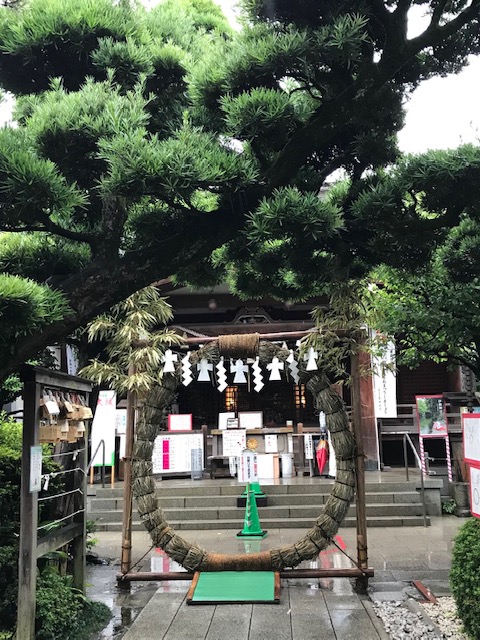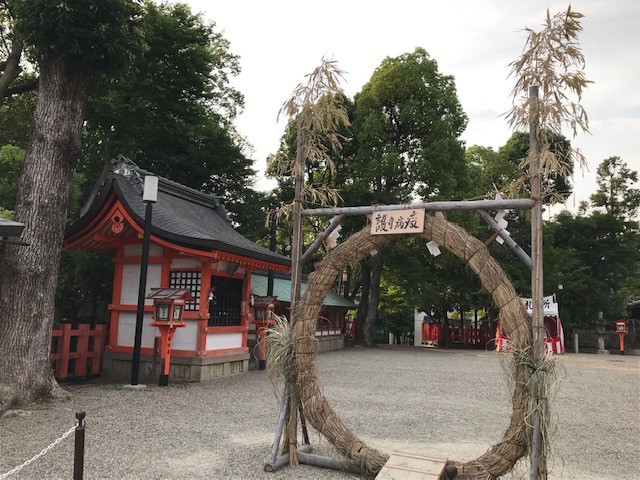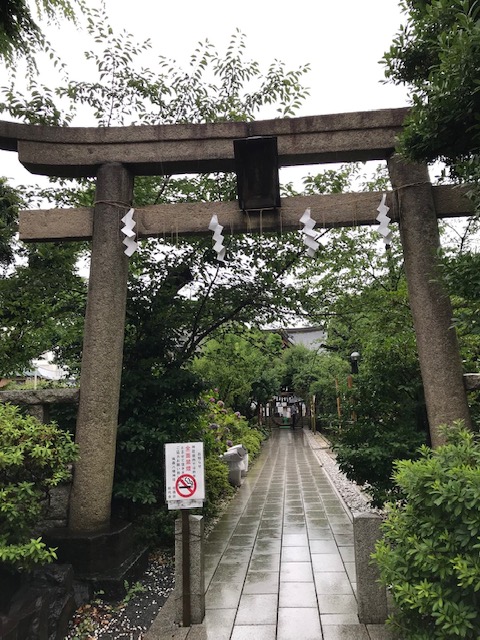Nagoshi-no-Ooharae (summer grand purification ritual)
A shinto ritual ‘’Ooharae (grand purification) are conducted on the last day of June and December, i.e. mid-year and end of year, to exorcise the sins and the impurity accumulated in the six months. Originally this ritual was held at the imperial court, today it is held at shrines nationwide while most popular in Kyoto. Harae is the general term for rituals of purification in Shinto. On the day, people visit shrines and scrub themselves with a paper doll so that it absorb their impurities and misfortune. In addition, “chinowa kuguri (passing through a hoop made of kaya grass [plants of sedge family])” is performed in many shrines. A very large “Chinowa” made in the shrine appears in the precincts, and by going through it, people pray for good health for the next six months. People also eat Minazuki sweet.
Minazuki
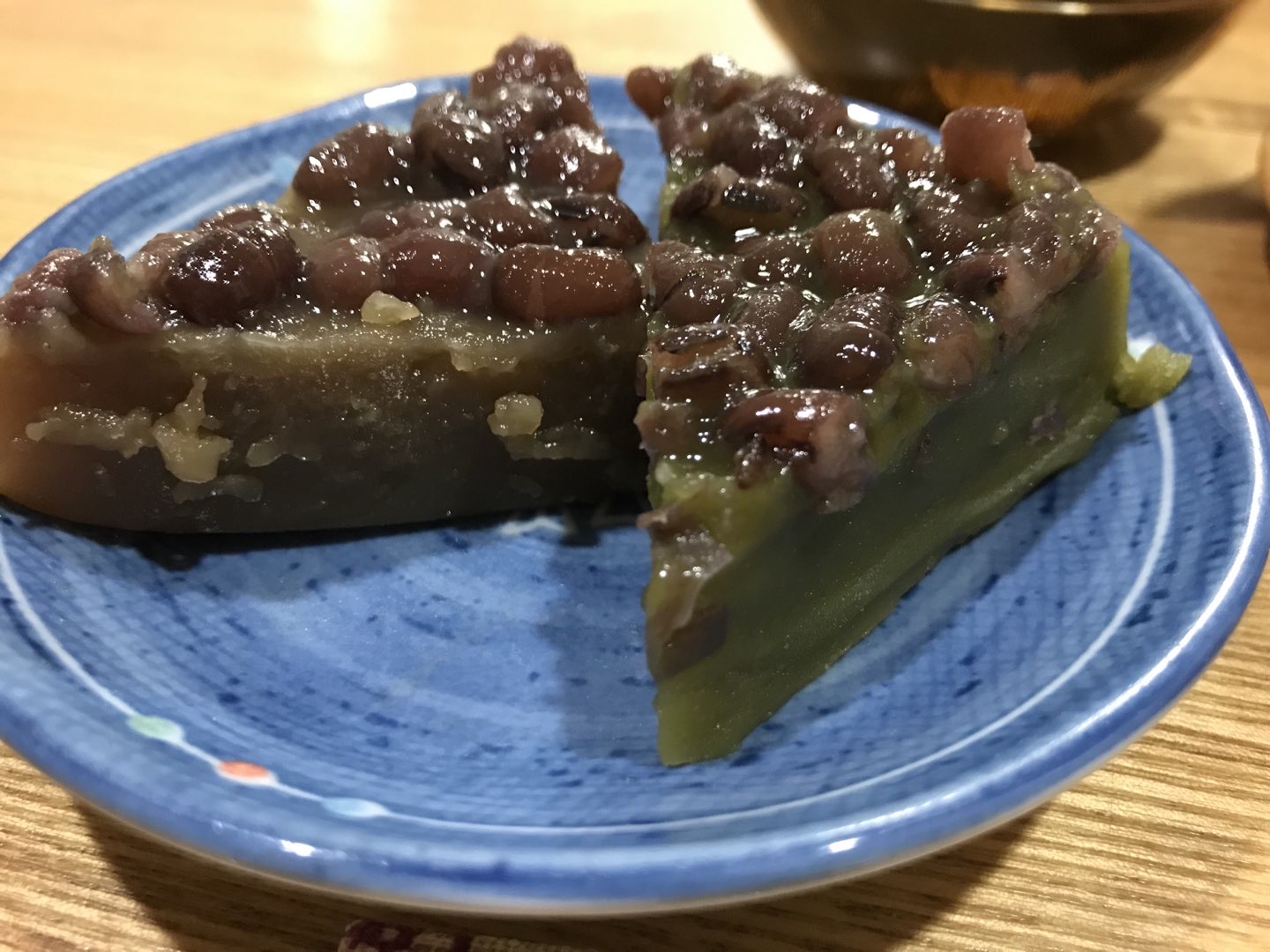
Standard minazuki 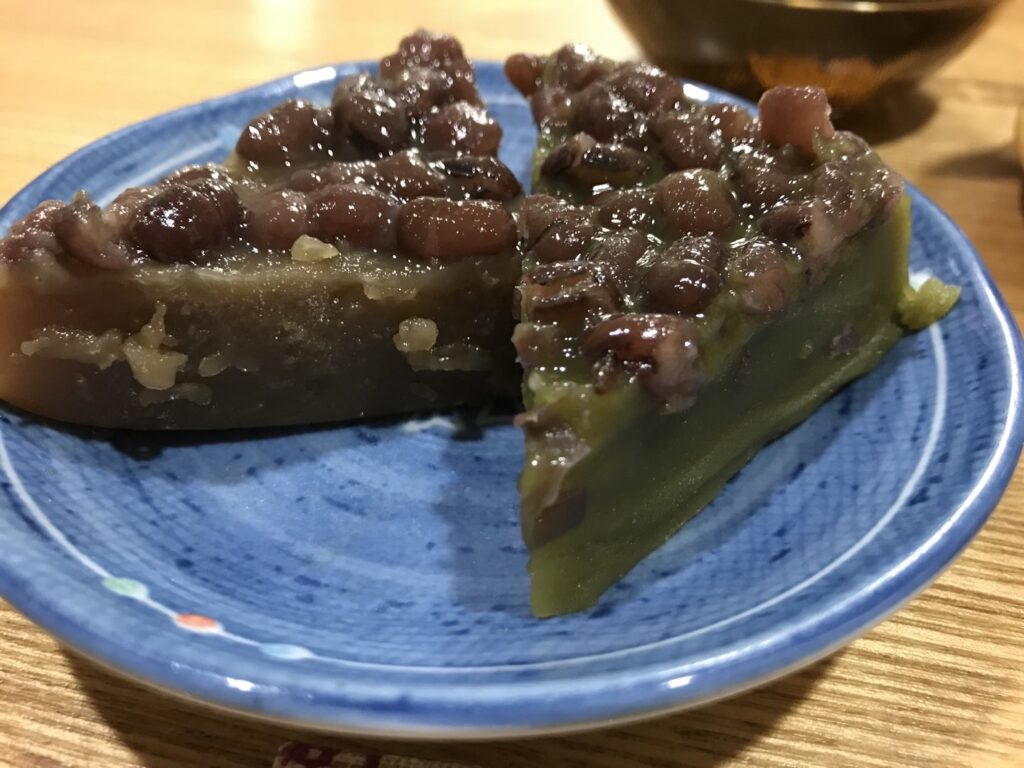
Matcha taste & brown sugar taste
This is “minazuki”, a traditional Japanese sweet usually sold in June. Azuki beans are on top of uirou, sweet rice jelly. “Minazuki (month of water)” is traditional name of June under lunar calendar. June of the lunar calendar corresponds to modern July, i.e. mid-summer. People want to have ice to cool body but it was difficult to have ice in summer at that time. “Minazuki” sweet is made with image of ice.
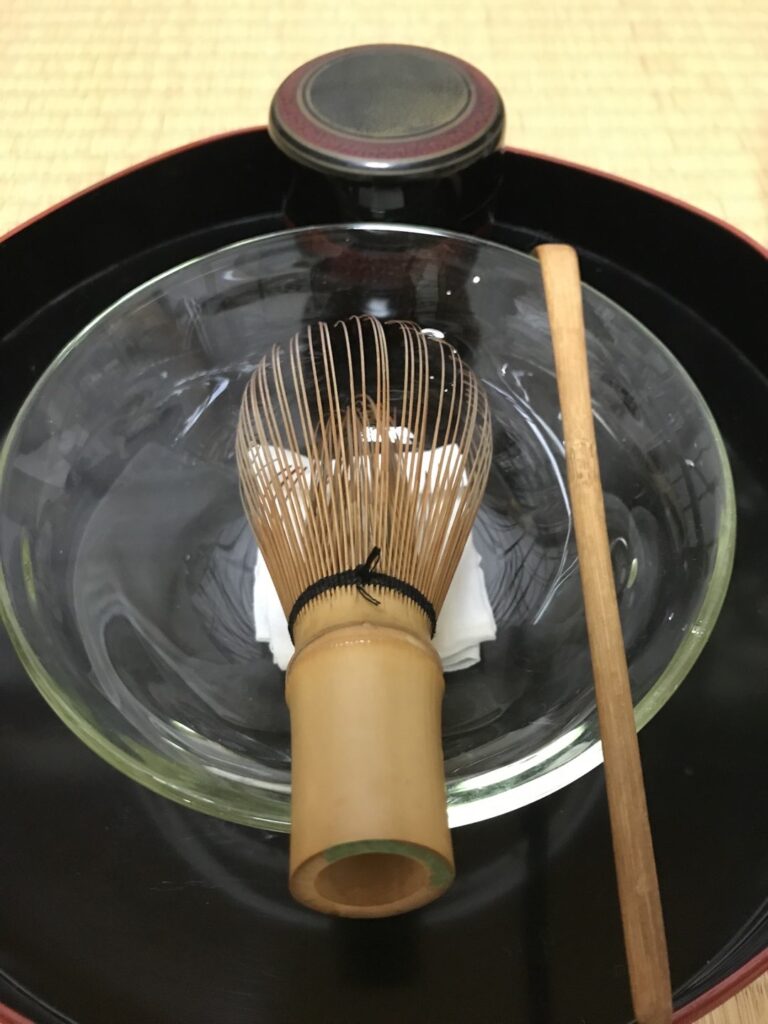
It is said that Azuki-beans have the power to cast away evil spirits. The triangle shape also represents a talisman to protect us from evil spirits and to keep off all sorts of diseases.
Thus people had “Minazuki” wishing to survive hot summer.
by TFWT PA&C


